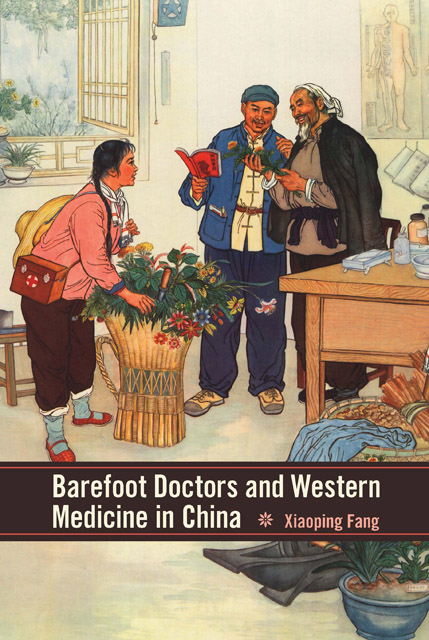Book contents
- Frontmatter
- Contents
- List of Illustrations
- Acknowledgments
- Maps
- Introduction
- 1 Village Healers, Medical Pluralism, and State Medicine
- 2 Revolutionizing Knowledge Transmission Structures
- 3 Pharmaceuticals Reach the Villages
- 4 Healing Styles and Medical Beliefs: The Consumption of Chinese and Western Medicines
- 5 Relocating Illness: The Shift from Home Bedside to Hospital Ward
- 6 Group Identity, Power Relationships, and Medical Legitimacy
- 7 Conclusion
- Appendix One The Organization of the Three-Tiered Medical System in Rural China, 1968–83
- Appendix Two Common Medicines in Chinese Villages during the 1960s–70s
- Abbreviations
- Glossary
- Notes
- Bibliography
- Index
1 - Village Healers, Medical Pluralism, and State Medicine
Published online by Cambridge University Press: 14 February 2023
- Frontmatter
- Contents
- List of Illustrations
- Acknowledgments
- Maps
- Introduction
- 1 Village Healers, Medical Pluralism, and State Medicine
- 2 Revolutionizing Knowledge Transmission Structures
- 3 Pharmaceuticals Reach the Villages
- 4 Healing Styles and Medical Beliefs: The Consumption of Chinese and Western Medicines
- 5 Relocating Illness: The Shift from Home Bedside to Hospital Ward
- 6 Group Identity, Power Relationships, and Medical Legitimacy
- 7 Conclusion
- Appendix One The Organization of the Three-Tiered Medical System in Rural China, 1968–83
- Appendix Two Common Medicines in Chinese Villages during the 1960s–70s
- Abbreviations
- Glossary
- Notes
- Bibliography
- Index
Summary
One chilly morning in the early spring of 1952, former Nationalist Party member Chen Hongting and his father Chen Changfu got up early and began their day as usual. The Chen family lived in Jiang Village, Hang County, in the eastern Chinese province of Zhejiang, in a house dating back to the Tongzhi reign of the Qing dynasty. There they carried on the sixty-year-old medical practice started by Hongting’s grandfather. Yet, on that day in 1952, this tradition was about to be transformed. For the past two years, new songs had echoed through the village:
The sky of the liberation area is bright.
The masses in liberation areas love it very much;
the democratic government loves the masses;
the kindness of the Communists is too enormous to be described.
On that fateful morning, the Chens once again welcomed several special guests into their clinic: a group of doctors from the neighboring villages. After continuing the discussion they had begun a few days earlier, the group finally agreed to use the Chens’ existing facility as a base for the new clinic, which would be known as the Jiang Village Union Clinic. Two rooms of the ground floor were set aside for treatment and the dispensary, while the top floor would serve as living quarters for the medical staff. The Chen’s family-operated private practice was thus transformed into a union clinic—that is, a public health station officially sanctioned by the new Communist government. The village celebrated the official opening of the Jiang Village Union Clinic with firecrackers.
The Plural Medical World on the Eve of the New Regime
Prior to the Communist victory in 1949, the medical world of rural China was largely plural and unregulated. Most professional doctors were individual practitioners of Chinese medicine who worked from “clinics” that were their own homes, although most consultations actually took place in their patients’ homes. Usually each doctor worked alone, specializing in a particular kind of medicine. Patients then went to Chinese medical halls to obtain the medicine their doctor had prescribed. Alternatively, some Chinese medicine doctors worked within such medicine halls and were known as zuotangyi (literally, “doctors who sit in the pharmacy”). They carried out their diagnoses over the counter and prescribed medicine that patients collected directly from the same pharmacy.
- Type
- Chapter
- Information
- Barefoot Doctors and Western Medicine in China , pp. 20 - 41Publisher: Boydell & BrewerPrint publication year: 2012



